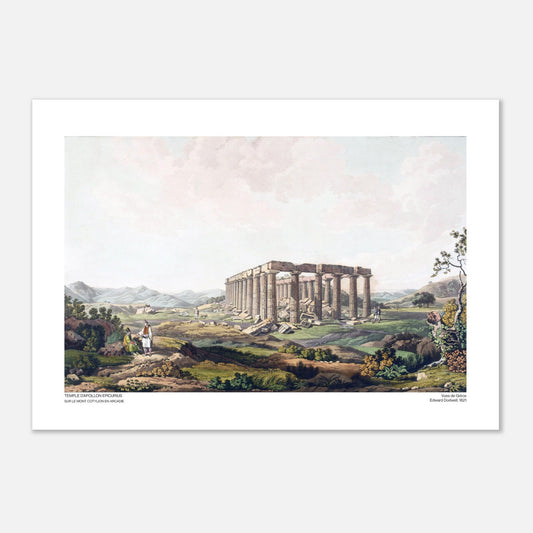Temple of Apollo Epicurius, on Mount Cotylion in Arcadia - Illustration from Edward Dodwell's Views of Greece
Temple of Apollo Epicurius, on Mount Cotylion in Arcadia - Illustration from Edward Dodwell's Views of Greece
Couldn't load pickup availability
Temple of Apollo Epicurius, on Mount Cotylion in Arcadia is an illustration from the collection Views in Greece from Drawings published by Edward Dodwell in 1821.
The Temple of Apollo Epicurius, perched on Mount Cotylion in Arcadia, is a jewel of classical architecture. Its secluded location and majestic columns create an aura of mystery and reverence, attracting visitors seeking beauty and tranquility.
The literal transcription of the notice accompanying this plate is reproduced below:
The city of Phigalia is completely surrounded by mountains; Mount Cotylion on the left and Mount Elaion on the right. Mount Cotylion is forty stades from the city. On this mountain, there is a town called Bassae, where one sees a temple of Apollo Epicurius, whose vault is of hewn stone. After that of Tegea, it is of all the temples of the Peloponnese the most esteemed, either for the beauty of the stone, or for the magnificence and symmetry of the building. The surname Epicurius, or "Helper," comes from the fact that these people were delivered from the plague by the help of the god. Ictinos, who had been the architect of the Parthenon in Athens, was also the architect of the temple of Apollo Epicurius.
It is necessary to add to this description of Pausanias a few words about the ancient state and present appearance of this temple. It is in the Doric style and is situated approximately north-south on a small circular and notched plateau of Mount Cotylion, which is part of the Lycaean range. It is built of a beautiful stone of fine and compact grain found in the region, and which is impregnated with a slight yellow tint approaching the beauty of marble. When complete, it had six columns on each facade and fifteen on each of the sides, including those at the corners; in all forty-two columns, with the two in the pronaos and the two in the posticum.
The interior of the cella was adorned with ten pilasters of the Ionic order, the capitals of which were of white marble. It appears that there was no other part of the temple covered by a vault than that under which the statue was placed. The form of the capitals is the same as that of the capitals of the Parthenon: there are still thirty-six columns standing, besides the shafts of some of the pilasters. The architrave is almost complete, but several of the columns are no longer in a perpendicular line, and the epistyles are consequently disjointed in several places. When I saw them, they were already threatening to fall, and this threat was partly opened, when subsequently the sculpture was removed. The vault and the walls of the cella fell. A sculpted frieze, which is now in the British Museum, was taken from the ruins of this temple in the year 1812.
The purity of the lines and the interest of the objects give a particular charm to the view of this temple. The mountain seen on the left in the distance is Mount Taygetus. The neighboring chain is formed by Mount Lycaeus and Mount Caniusius. The eye discovers above the lowest part of this chain the Gulf of Messenia, the memorable plain of Stenideros and Mount Ithome whose summit ends in the shape of a table. On the right between the columns one sees the plain of Cyparissia, and Theriszon stands near the gulf of the same name and the Sea of Sicily. The two figures on the left are my two Turkish servants, Ibrahim and the Salic Tatar. The north facade and the east side of the temple are represented in this drawing.
About this print
About this print
The layout and composition of this reproduction have been the subject of our greatest attention.
- Respect for the format of the original work: in order to faithfully transcribe the artist's intention, the work is not cropped/re-cut except in extreme cases (obvious imperfection, geometry problem, etc.) in which case the cropping will be as light as possible.
- The presence of white margins is sometimes necessary in order to present the work in a balanced manner.
- Each size offered has been specifically composed, therefore, the size of the white margins may vary from one print size to another. Remember to check this detail carefully!
- Print only, frame not included!
Features
Features
- Premium 200gsm matte white paper, durable and strong.
- Natural, smooth uncoated finish, silky to the touch
- FSC certified paper or equivalent certifications depending on regional availability.
- Each print is shipped in sturdy packaging, ensuring safe transport.
- Each print is printed and shipped on demand. No minimum order quantity is required.
Share !
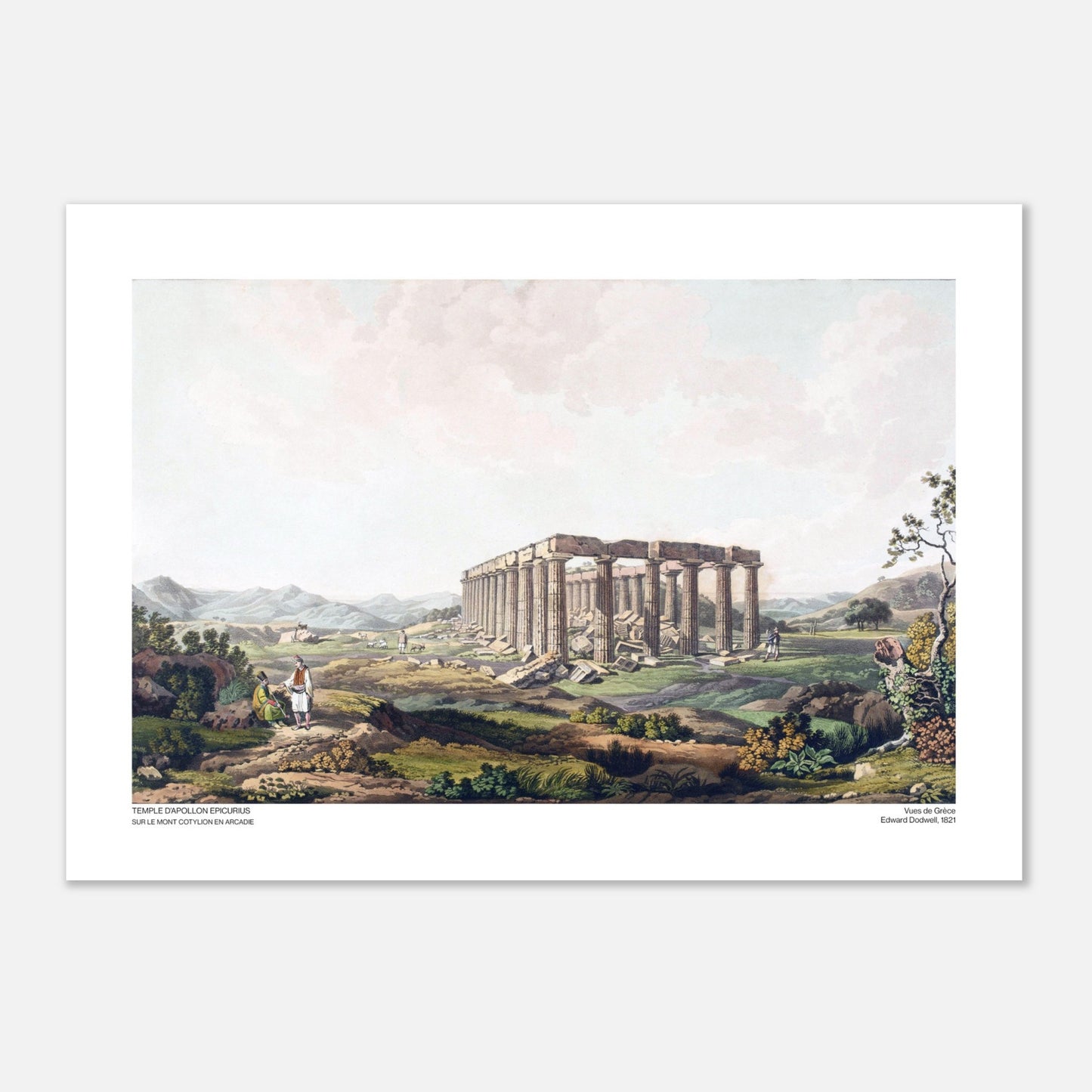
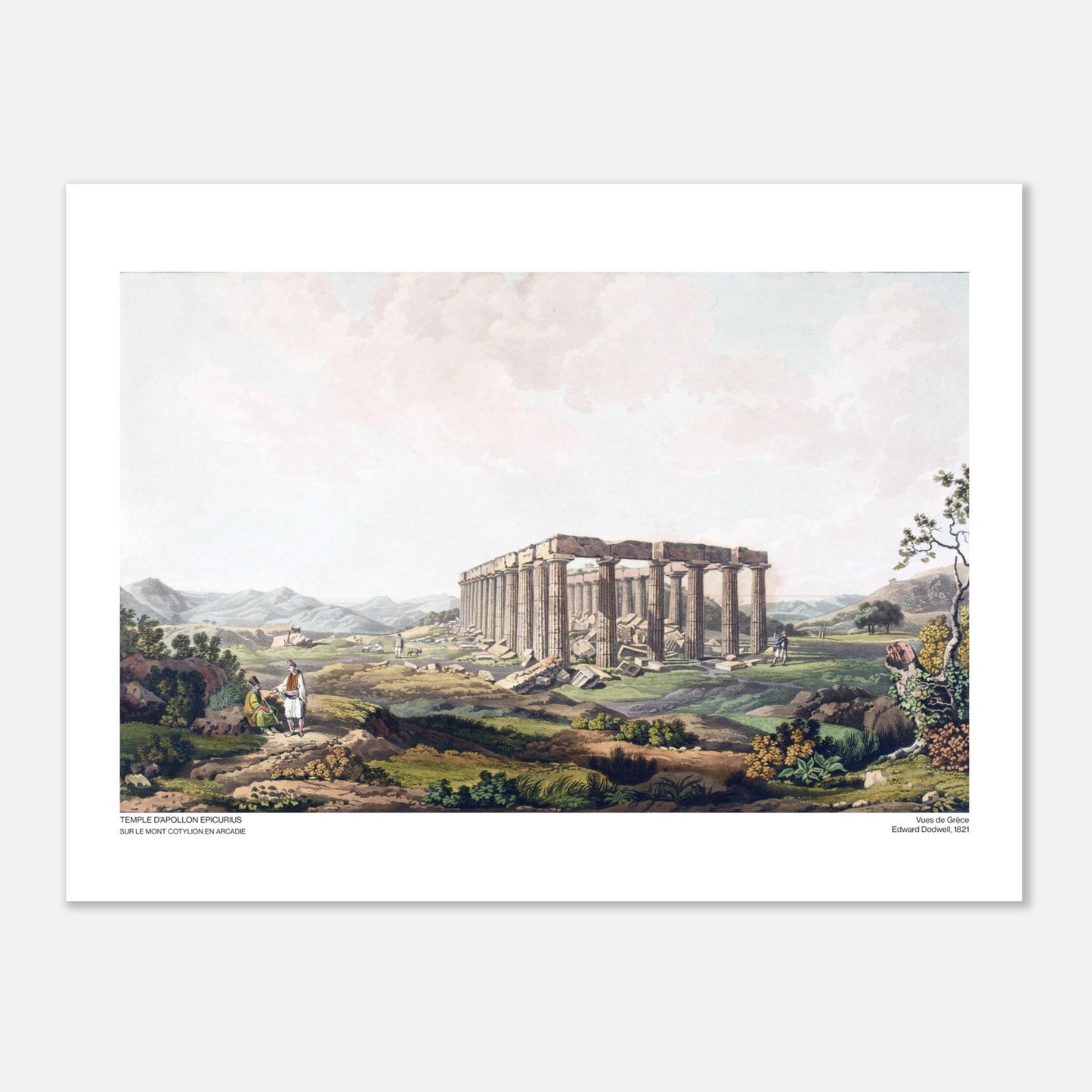
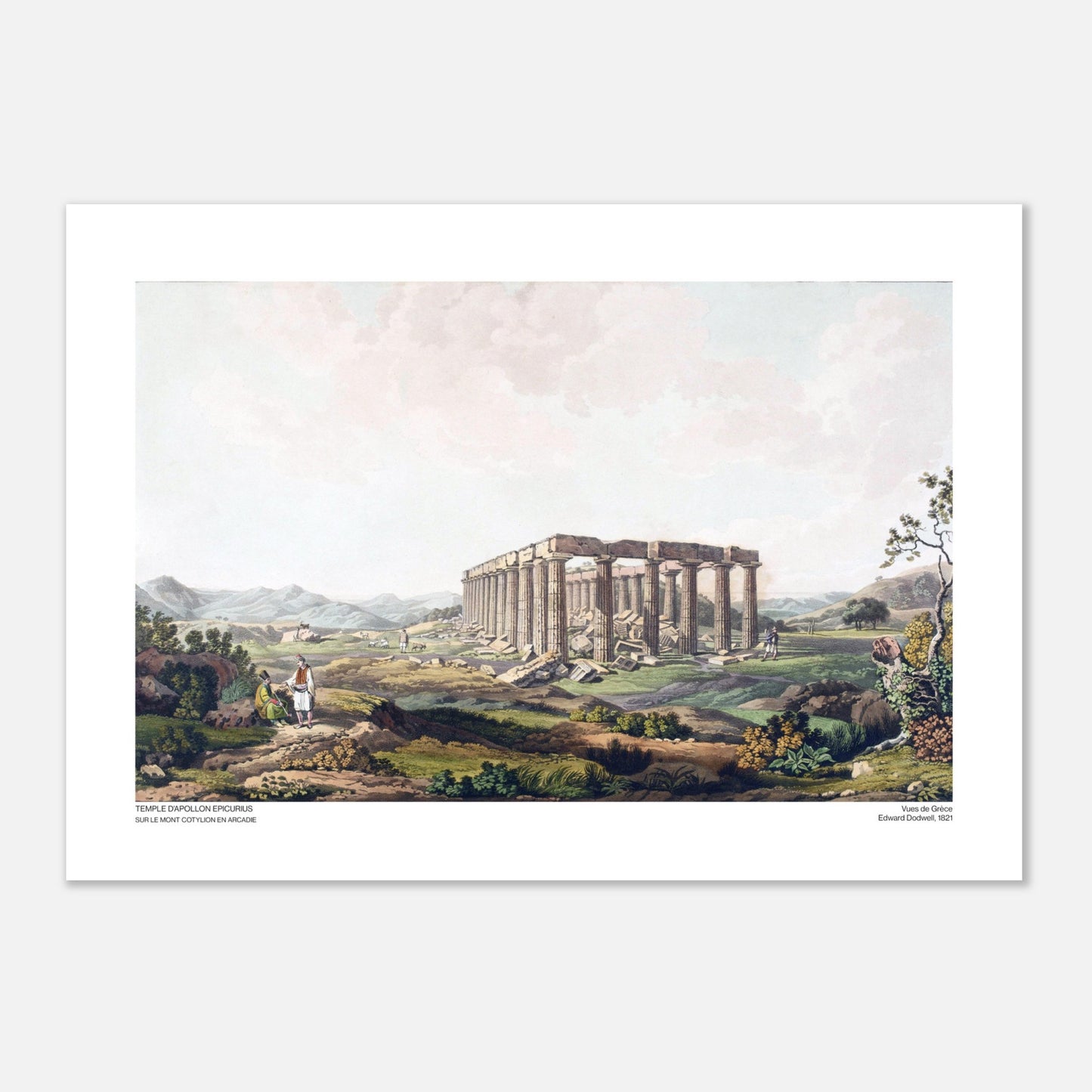
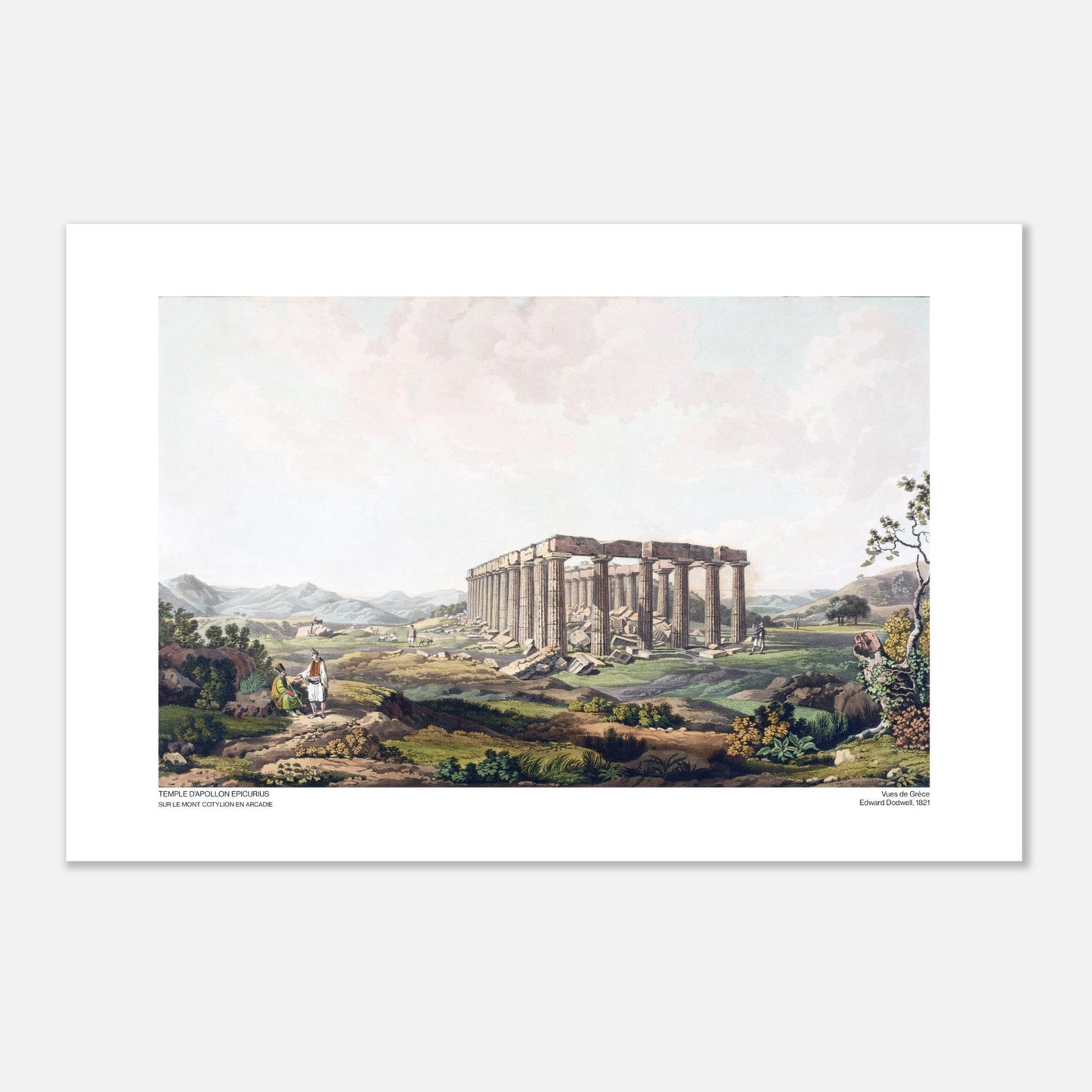
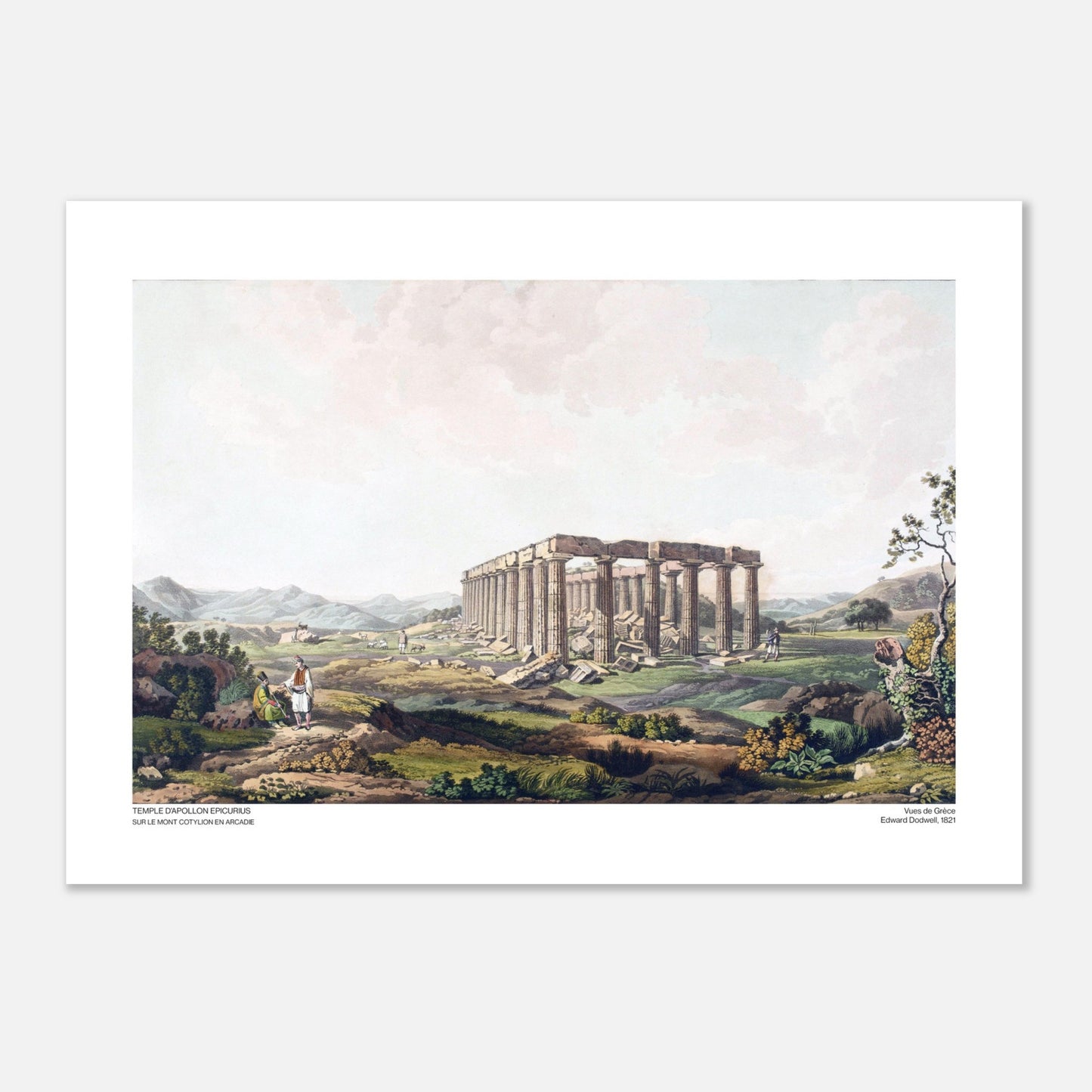
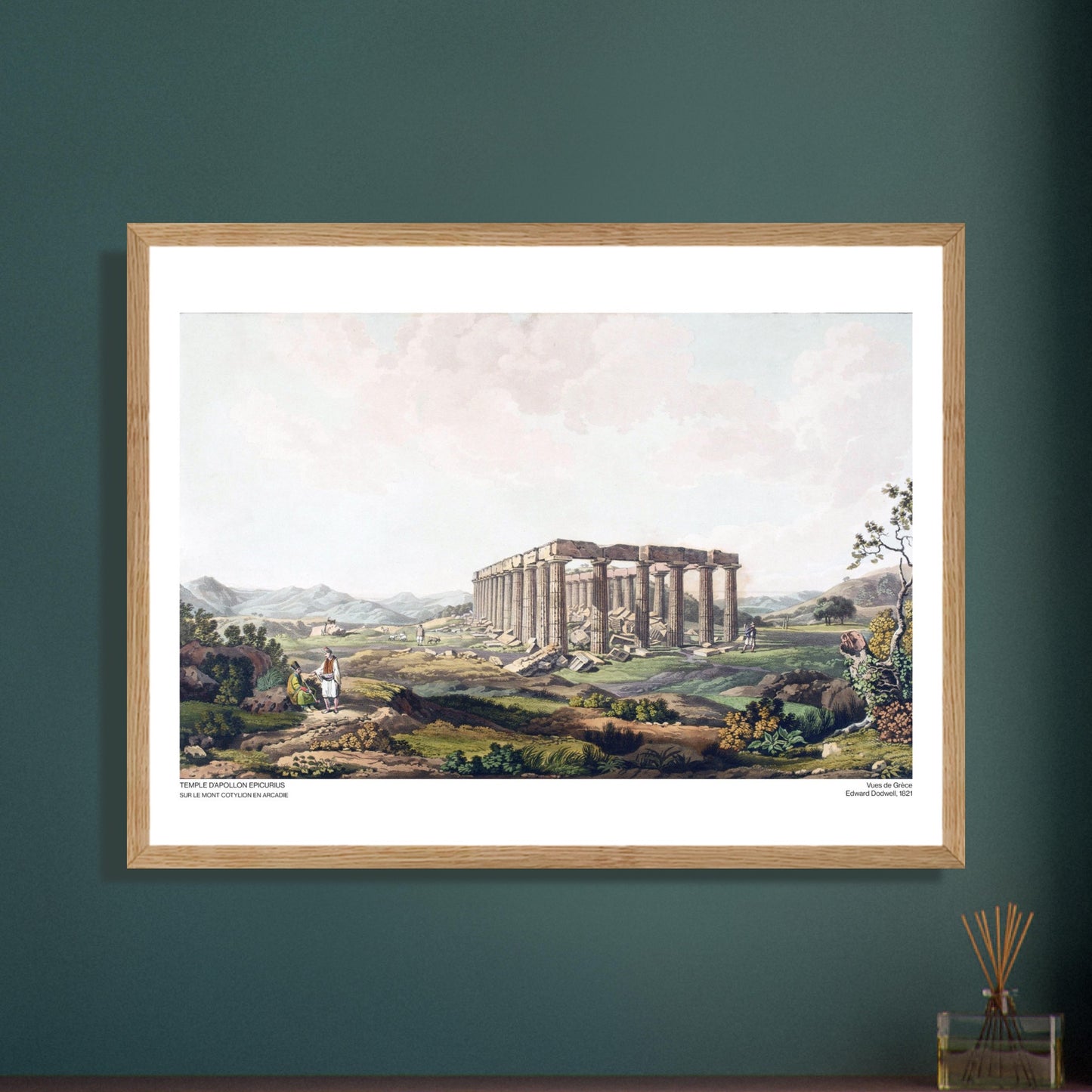
We are listening to you
If you are looking for a specific composition, a particular layout, or any other customization need, our team is at your disposal and will do everything possible to meet your requests.
So don't hesitate to...




